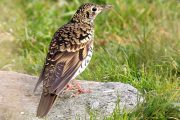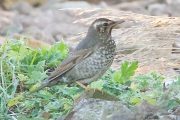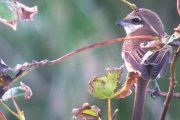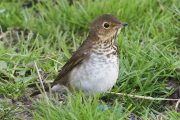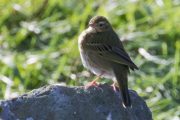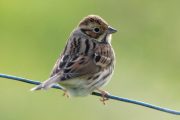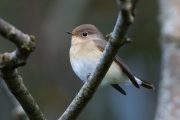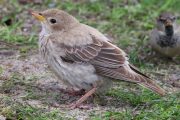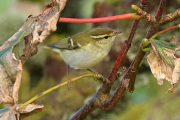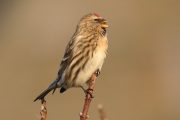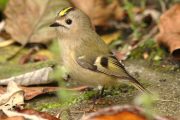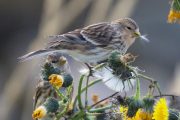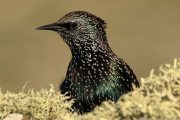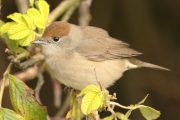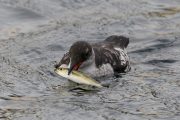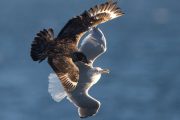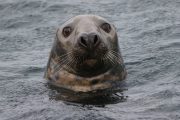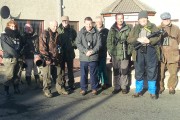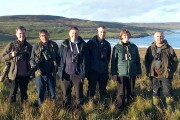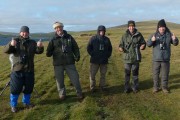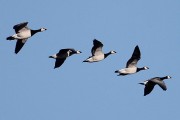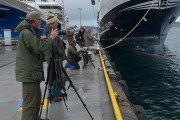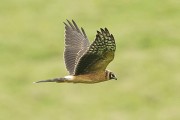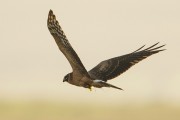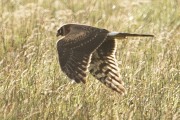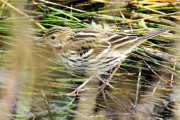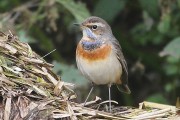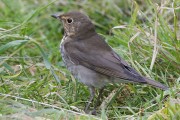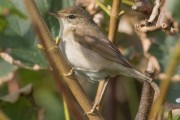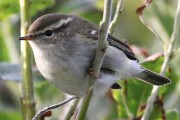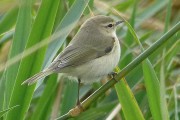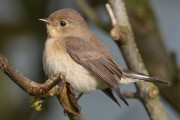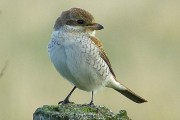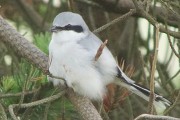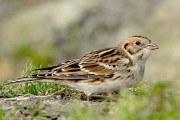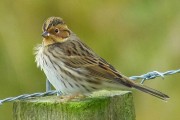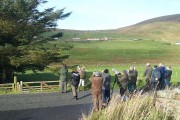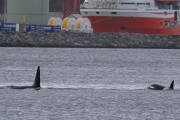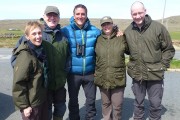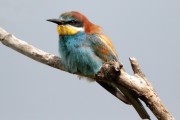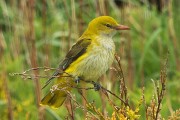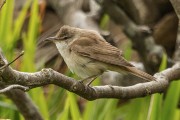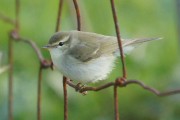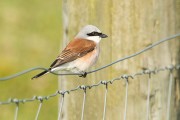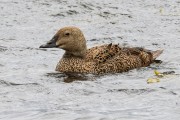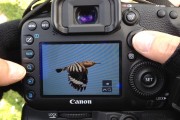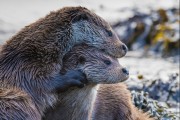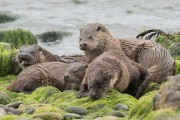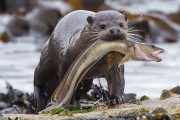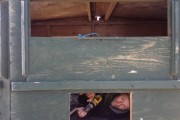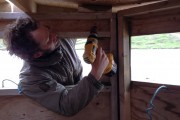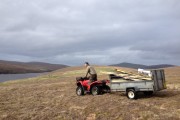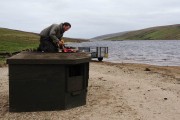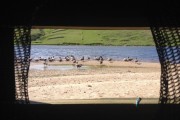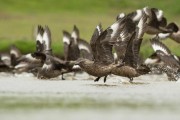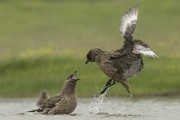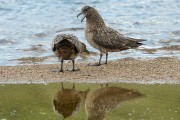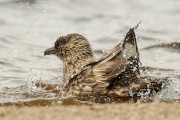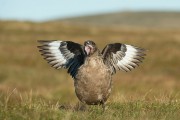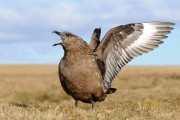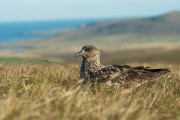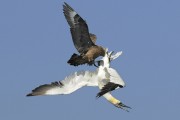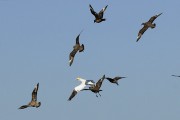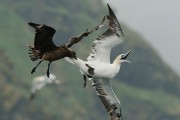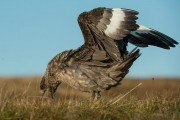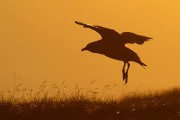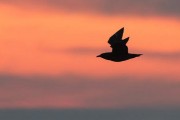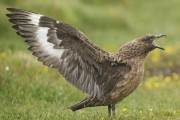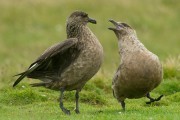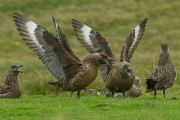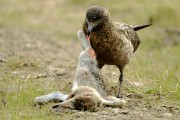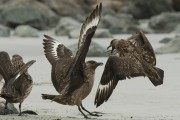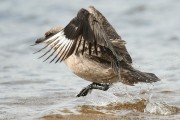Archive for the ‘News’ Category:
2016 Shetland Autumn Birding review, part one
Posted by Brydon Thomason on Friday 25th November 2016 | Birding in Shetland, News
A review of our Autumn Birding season; part 1, in association with Birdwatch Magazine & Birguides
This season our core birding weeks, led by Rob Fray and Gary Bell, as usual ran over the last week of September and first week of October however we had itineraries running through to third week in October. It goes without saying this year that it has been The most epic of autumns and therefore by far our most exciting to date. We were delighted to welcome a good balance of both new and regular SN customers, some of which just can’t miss a single autumn for fear of what they might miss and this year that was a very, very wise decision!
Week one was for the most part frustratingly dominated with westerlies and Atlantic low pressure systems, bringing with it quite a lot of rain and not so many birds, at least compared to the following week! It’s not to say it was without highlights though, with birds already present and new ones arriving when the weather finally changed, there were plenty.
It’s crazy to say it but over a week that often saw very difficult birding conditions, with strong winds and lashing rain the list of birds on Shetland over the week was more than impressive, to name but a few of the rarities; Pallid Harrier, Olive-backed Pipit; Paddyfield, Arctic and Radde’s Warblers however probably the most enjoyable/obliging for our guests were Blyth’s Reed (s), Greenish and Dusky Warblers and best of all the Brown Shrike at Aith was certainly the rarest bird of the week.
Scarcities were not far from the limelight either with an equally impressive supporting cast throughout the isles. Rose Coloured Starling, Little Bunting, Hoopoe, Hawfinch and Red-breasted Flycatcher were all present whilst a pod of Pilot Whales in Lerwick harbour showed that there is can always be a cetacean surprise even in autumn.
Rolling into week two the pace certainly picked up. Over night between 01-2/10/16 the weather brought an exciting change from the south east, which was to hold throughout the entire month. This was the beginnings of the most extraordinary October on record. The first of over five weeks of easterlies set a pretty high standard with top drawer tackle such as yet another Brown Shrike (with a third being discovered later!), the first of multiple Red-flanked Bluetail, Great Snipe Lanceolated Warbler followed by Swainson’s and multiple Whites and Black-throated Thrushes but the star of the ‘thrush fest’ was the superb 1st year male Siberian Thrush which was a joint, team effort find for our group and Dave Bradnum, Howard and Bob Vaughan. Another good find for our group was a Hornemann’s Arctic Redpoll, one of several which presumably arrived the previous week of NW winds. A Western Orphean Warbler was a real surprise and mega but proved to be frustratingly elusive after its initial discovery.
In addition to the outstanding cast of sizzling Sibes throughout the week there was Paddyfield and Blyth’s Reed Warblers along with multiple Radde’s, Dusky and Pallas’s Warblers, Olive-backed and Richards Pipits, Bluethroat and Red-backed Shrike whilst in typical Shetland autumn standard Yellow-browed Warblers were pretty much everywhere throughout the islands as well as Little Buntings and Red-breasted Flycatchers here and there whilst interestingly Barred warbler and Common Rosefinch were much scarcer than our usual autumns however, it’s quite safe to say that low numbers of the latter would not have crossed anyone’s mind given the superb quality of birds on offer during the first half of our Shetland Autumn Birding season.
Part two to follow soon…
Permalink
Book launch: Otters in Shetland – The tale of the draatsi
Posted by Brydon Thomason on Tuesday 1st December 2015 | News, Otters
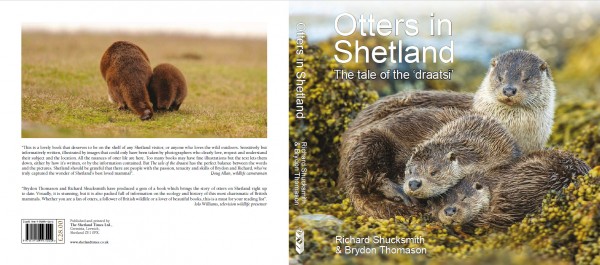
At last – after years of planning and the inevitable blood sweat and tears endured with such a huge project, it is finally here and the story of Shetlands otters is communicated through our book Otters in Shetland – The tale of the draatsi.
As it is for anyone who puts their heart and soul into writing a book, especially one on a subject so special and emotive to them, we are immensely pleased and equally proud of this project.
With a gap of over 20 years since anything was published on Shetlands otters it was really important to us to tell their full story and bridge a gap between a science-based reference book and a photographic story-telling book.
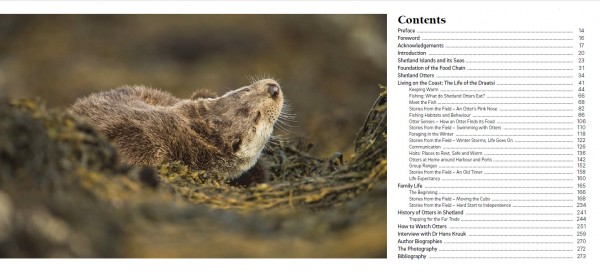
From beginning to end the story flows with each and every page and chapter leading into the next; from the Islands and geography; the foundations of the food chain; how they live on the coast through to family life and so on. We also bring in fascinating interviews with Shetlanders who many years ago once hunted them for the fur trade which offers a unique insight into mans relationship in the isles both past and present.
Through our time photographing otters we have captured and documented many, in fact most aspects of their lives and in doing so have created a unique portfolio of images. Incorporated into the informative captions, which accompany these images we bring in the fascinating scientific research from Dr Hans Kruuk, a world leading authority on otters, who we were truly privileged to have write the foreword and to receive such praise from him is a hugely gratifying commendation to us.
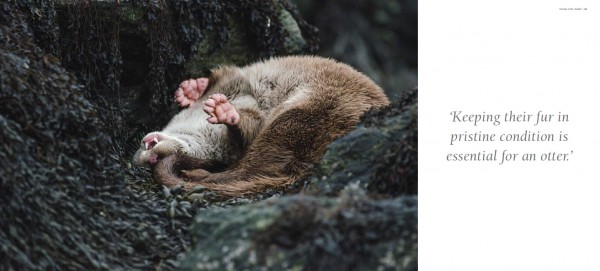
Our publisher, The Shetland Times said in their recent press release: “The book has been gaining plaudits from experts in the field of wildlife and photography weeks even before its release date” and then went on to quote Hans Kruuk and wildlife cameraman Doug Allan.
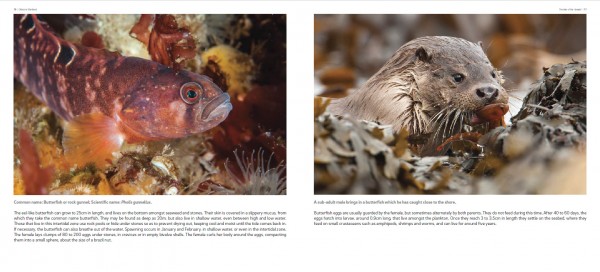 Here’s a couple of extracts from the foreword by DR Hans Kruuk:
Here’s a couple of extracts from the foreword by DR Hans Kruuk:
“…With all this, the authors make a large contribution to conservation, not just of otters but of the entire coastal ecosystem. Conservation is served by the simple statement of the beauty of the animals in the context of science and natural history, as well as by the detailed explanation of exactly what otters need to survive.
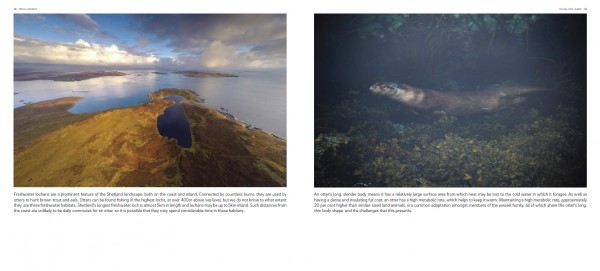 “The reader is made aware of the otters’ hardships in terms of exposure to cold waters, of the need to catch prey quickly as well as keeping their fur clean to keep out the cold – for which they need the many small sources of fresh water along the Shetland coast (which, incidentally, are almost absent in places where otters are few, such as Orkney or the Scottish east coast).
“The reader is made aware of the otters’ hardships in terms of exposure to cold waters, of the need to catch prey quickly as well as keeping their fur clean to keep out the cold – for which they need the many small sources of fresh water along the Shetland coast (which, incidentally, are almost absent in places where otters are few, such as Orkney or the Scottish east coast).
“The book is a thoughtful object of beauty, of otters, and of the Shetland coasts. The authors should be immensely proud of this great effort”.
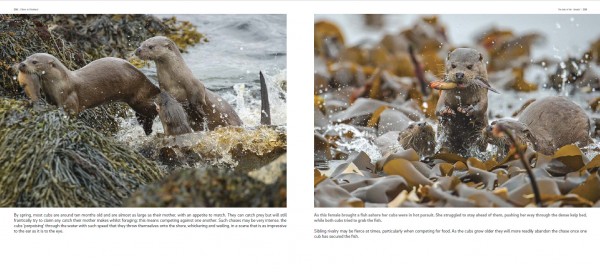 Wildlife cameraman Doug Allan:
Wildlife cameraman Doug Allan:
“This is a lovely book that deserves to be on the shelf of any Shetland visitor, or anyone who loves the wild outdoors. Sensitively but informatively written, illustrated by images that could only have been taken by photographers who clearly love, respect and understand their subject and the location. “Shetland should be grateful that there are people with the passion, tenacity and skills of Brydon and Richard, who’ve truly captured the wonder of Shetland’s best loved mammal”.
TV wildlife presenter Iolo Williams:
“Brydon Thomason and Richard Shucksmith have produced a gem of a book which brings the story of otters on Shetland right up to date. Visually, it is stunning, but it is also packed full of information on the ecology and history of this most charismatic of British mammals. Whether you are a fan of otters, a follower of British wildlife or a lover of beautiful books, this is a must for your reading list”.
Details of the book
The book, in hardback only costs £28.00 and is available to order through our publisher here or through us following the official launch date of 12th December.
In total we tell the story of Otters in Shetland through 35,931 words, 276 pages and just over 220 photographs.
We hope you like it!
Brydon Thomason and Richard Shucksmith
Permalink
Shetland 2015: Autumn Birding Review – In association with Birdwatch Magazine
Posted by Brydon Thomason on Monday 16th November 2015 | Birding in Shetland, News
As Shetland becomes ever more popular in autumn, high expectations hang over the magical Northern Isles for what the winds may bring. So well placed is the archipelago that even without favourable wind and weather the isles will usually still manage to deliver. This year’s prime-time weeks in late September and early October were a classic example of this.
These migrant birding holidays always begin with optimism and anticipation and indeed with the Quendale Thick-Billed Warbler (successfully twitched with a guest from a previous tour) and then finding a nice Blyth’s Reed Warbler the day before the trips began, leader Chris Rodger knew anything was possible, despite a not-so-promising long-term forecast.
In a systematic ‘trip-list style summary’ he rounds up the highlights.
Highlights
- National rarities: Swainson’s Thrush, Pechora Pipit, Pallid Harrier and Arctic Warbler.
- Regional rarities: Blyth’s Reed Warbler, American Golden Plover.
- Scarcities: Red-breasted Flycatcher, Red-backed and Great Grey Shrikes, Little Bunting, Common Rosefinch and Bluethroat.
- Self-found by the group: Richard’s Pipit, Bluethroat and numerous Yellow-browed Warblers.
Wildfowl
The evocative sight and sound of Whooper Swans arriving from Iceland was a regular feature, along with migratory movement of many Pink-footed and Barnacle Geese overhead on their journey south. On the sea, Long-tailed Duck numbers seemed to swell by the day, with Velvet Scoter and Slavonian Grebe also enjoyed. In addition to the many Red-throated Divers, some Great Northern Divers still retained stunning summer plumage. A fine drake Greater Scaup was seen at Loch of Norby.
Raptors (and owls)
Undoubtedly the star bird of prey was the juvenile Pallid Harrier, seen coming to roost at Northdale, Unst. Hen Harrier, Peregrine and Short-eared Owl were less frequent than the many migrant Kestrels, Sparrowhawks and Merlins, which were particularly numerous this autumn.
Waders to doves
As is true to form on previous Shetland autumn birding trips, Nearctic waders were sure to feature and this year came in the form of a ‘classic’ juvenile American Golden Plover, which really stood out among the European ‘Goldies’ at Sandwick. Many Jack Snipe were seen – mostly rising from marshes and often almost from underfoot, but some particularly obliging birds at Lambaness froze to the spot to show at close range their beautiful cryptic plumage. A smattering of migrant waders included Ruff, Black-tailed Godwit, Grey Plover, Knot, a late Eurasian Whimbrel and the always ubiquitous and subtly different ‘Icelandic’ (faeroeensis) Snipe. White-winged gulls were incredibly scarce this year on Shetland, though Arctic Terns and one Common Tern lingered for the group to see. An adult European Turtle Dove at Haroldswick was well scrutinised to eliminate meena Oriental Turtle Dove.
Pipits to thrushes
A self-found Richard’s Pipit at Lambaness was a highlight for the group, schreeping for Scotland as it bounded across Lambaness and a good example of quality scarce migrants that feature as team self-finds to add that extra gratification. This was the first of several seen. A ‘tiger-striped’ Pechora Pipit, twitched at Norby, eventually yielded to give excellent views as it crept through the irises. A combination of its genuine rarity value, Shetland speciality status and confiding nature ensured this was a firm favourite of the week. Braving gale force wind and rain on Unst, a female Yellow Wagtail was found by the group as was a Bluethroat, discovered hunkered down in a ditch at Burrafirth – if ever proving that ‘you have to be in it to win it’, no matter what the weather! Another fine Bluethroat was enjoyed feeding at close quarters at Quendale.
Undoubtedly a highlight came in the form of a Swainson’s Thrush on Unst – a superb end to the first full day of the trip. After a mad dash from literally the opposite end of Shetland, the group had to endure perhaps the most suspenseful wait in fading light for the bird to hop out from under some fishery crates in the yard of a shop! Hop out it did, revealing the lovely buff face and eyering and subtle underparts spotting, and it even gave a close fly-by to show off its underwing stripe. This was a tick for all bar one of the group, who also saw one with our Shetland Nature autumn birding group on Unst last year!
Warblers and crests
Perhaps the group that forms the major attraction for rarity-hunters on Shetland, warblers – a common and rare alike – were relatively thin on the ground this autumn. Despite this, the group did see a Blyth’s Reed Warbler (which had been found by Chris the day before the trip started) and several Barred Warblers. An Arctic Warbler was a rarer highlight; the group missed this bird on Unst, when it disappeared on the day it lost its tail. However, we caught up with what must surely have been the same bird several days later when a tail-less Arctic Warbler was found in central Mainland. To be fair, Yellow-browed Warblers didn’t disappoint this autumn – amazingly by far the most frequent warbler, but very much still a joy to see. As ever, the Shetland autumn trip allowed the comparison of side-by-side Common and Siberian Chiffchaffs. A personal favourite were the mornings when Shetland is seemingly awash with tiny Goldcrests – mass landfall of these wee 5-gram waifs signal ‘birds in!’.
Flycatchers to buntings
Both groups enjoyed three species of flycatcher, including some very confiding, and always photogenic, Red-breasted Flycatchers. Both Red-backed and Great Grey Shrikes were seen on Unst. Of the finches, Bramblings added colour while redpolls, although surprisingly scarce in the islands this autumn, encouraged ID discussion. A most impressive sight was a flock of 200 very confiding Snow Buntings, swirling all around us like an avian snowstorm on the wild windswept headland of Lambaness. A scarcity that we can usually look forward to throughout the Shetland is Common Rosefinch, which this year was hard won but eventually added to the trip list, unlike a Lapland Bunting which fed virtually at our feet. Of the scarcer buntings, a nice bright Little Bunting on Fetlar was timed well, found by fellow SN team members Micky and Brydon on the same day we were all on the isle. Perhaps a commoner example of the many Shetland scarcities to end on, but it does leave tantalising thoughts for what the review might start with for next year’s Shetland Autumn Birding trips!
Chris Rodger
Permalink
Shetlands otters featuring on ‘Grand Tour of The Scottish Islands’
Posted by Brydon Thomason on Tuesday 13th October 2015 | News, Otters, TV Appearances
There is literally not a year that passes that The Shetland Islands are not featured on television networks throughout the United Kingdom and beyond. Regularly featuring on many of these and helping to promote how special Shetland is is something we are always very proud of indeed.
Having already worked with the BBC Springwatch crew earlier this year we were delighted to be approached by BBC Scotland to work with the Grand Tour of The Scottish Islands film crew to feature otters on their program. Overall the show was really good and showed an interesting diversity of life on the isles, made more so especially by Cheryl Jamieson of Glansing Glass, Andrew Magnie Thomson, Rhoda Hughson and Les and Joanne on Fetlar.
To watch the program on BBC iPlayer you can view here or you can see the short piece posted by BBC Scotland of us with the otters here.
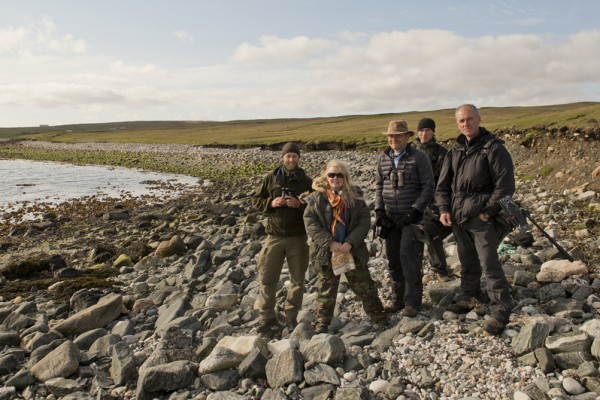
The crew were really fantastic to work with; presenter Paul Murton, producer Kathryn Ross, cameraman Richard Cook and sound man Richard Paterson. As well as being really on the ball they were also great fun which helped phase the on-camera tension I always get when being filmed! On the day I was joined by Josh Jaggard which was a real bonus, having his sharp eyes helped to keep track of the family whilst we were filming, which relieved at least some of the pressure and help us get the footage we did.
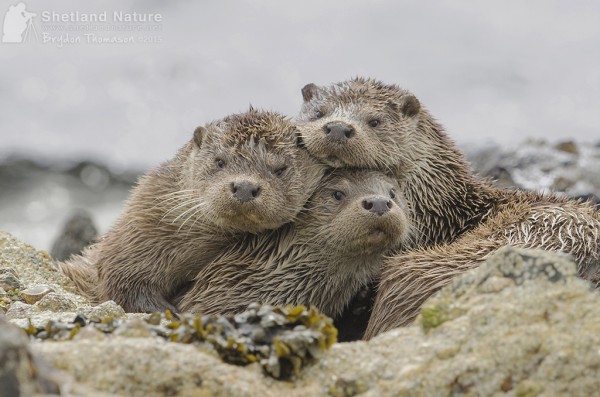
We were thrilled to spend the several hours with a mother and her two cubs, throughout which enjoyed some really lovely behaviour from affectionate family group huddles to action packed foraging and feeding sessions.
With the weather in our favour, the otters performing and a thoroughly successful shoot, we couldn’t have asked for more. Read more about the otter tours we do here.
More from the BBC’s popular ‘Grand Tour of The Scottish Islands’ here.
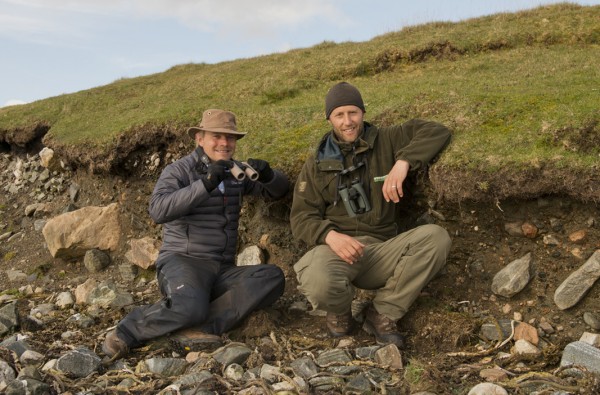
Permalink
Shetland Nature at Rutland Birdfair
Posted by Brydon Thomason on Thursday 20th August 2015 | News
Just a brief note to say that we are looking forward to attending and exhibiting at the British Birdwatching Fair, 21st – 23rd August, and that we very much looking forward to seeing friends, associates and anyone keen to know more about Shetland.
We are on stand 14 in marquee 3. Please do call by if you are there.
In the spirit of supporting the fair and fund raising for conservation causes we have donated a self catered stay in our Shetland Nature Lodge, which they are putting forward to the auction.
Also we will be updating blogs etc on our return next week with round ups on what we are delighted has been our busiest season so far.
Permalink
2015 Season’s Summary So Far
Posted by Brydon Thomason on Friday 19th June 2015 | News
Well what a start to our 2015 core holiday season it has been, barely half way through and it has already been truly remarkable.
We have holidays running each week from late May through to mid August and each one has been full, which is something we are really thankful for and indeed excited by. In fact the only holidays left with spaces on, both outside the ‘core season’ and they too are limited, is one of two Late Summer Experience (an additional August date due to first one selling out) and Shetland Autumn Birding. It’s actually been a busy year all round with one or two bespoke itineraries, particularly Otter Photography through winter into to spring, as well as day tours too. Each week we have day tours running too, along with holidays this can often see us with as many as five guides out in any one week- a huge thank you to each and every one, as we always say, we couldn’t run to the scale we do without the help and collaboration we are so lucky to have.
So, what have we/our guests been seeing? What haven’t we been seeing is maybe a better question to ask! With Killer Whale’s, Risso’s Dolphin, Harbour Porpoise and Minke Whale all having already been seen on trips, cetaceans have already been very well represented. On the birding front it has already been remarkable with rare and exotic spring visitors, scarce migrants, iconic breeding species and superb spectacles. The rare and exotic; Rustic Bunting, Subalpine Warbler, Golden Oriole, Hoopoe, Greenish Warbler (actually found by group), Great Reed Warbler, Bee-eater, both the Unst ‘small race’ Canada Geese not to mention multiple Icterine Warbler, Red-backed Shrike and Marsh Warbler. On one day alone one of our groups found two Icterine Warbler’s and four Red-backed Shrike! Where else but in Shetland!
And the otters, oh the otters! True to form we deliver a truly unique educational encounters with Shetlands otters. Over the range of experiences for guests we run, from one-to-one specialist photo assignments, day tours and bespoke Otter watching holidays and on all of these so we/the otters have certainly not disappointed. These images from Otter photography guests so far this season showcases the kind of encounters we deliver to our guests. We are also launching a new holiday dedicated to Otter’s in 2016 The Shetland Otter Watching Experience.
2016 holiday dates and departures
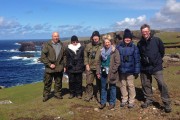 With so many superb highlights already logged for guests this season and Shetland featuring on screen on BBC Springwatch its worth pointing out that our 2016 dates were uploaded to our website recently and are already starting to fill.
With so many superb highlights already logged for guests this season and Shetland featuring on screen on BBC Springwatch its worth pointing out that our 2016 dates were uploaded to our website recently and are already starting to fill.
Other news
Visit our blog for our latest news posts and what we have been up to. In particular we have enjoyed working with and being involved with two film crews. It was particularly exciting working with BBC Springwatch helping out in the field with local knowledge and also having our hides used for filming. Also we were delighted to work on another program, due to air later this year with BBC Scotland’s Grand Tour of The Scottish Islands who we worked on otters with and got some superb encounters with one of the families we are working on, more on that nearer the time…
So if you are due to travel with us, we very much look forward to welcoming you and making your visit as exciting and memorable as everyone’s so far has been- and if you are one of those guests, we thank you again for your company and custom!
Permalink
Bonxie club site bathing hide
Posted by Brydon Thomason on Wednesday 10th June 2015 | Brydon's Shetland Nature Blog, News
Following on from the success and popularity with photographers in working from my one-man Bonxie bathing hide last year I set up a new larger hide at a much better location. Thanks to Josh Jaggard and the use of a quad and trailer from Duncan, it was not as back breaking a project as it would have been on my own.
The behavioural action at these loch-shore club sites offers some superb opportunities to photograph these superb skuas. Often there can be as many as 50, 60 or even more birds at any one time and often down to 5 to 10m from the hide. It is of course especially good for bathing birds but also there is frequent squabbles break out so plenty of action.
We were really pleased to have BBC Springwatch use both this and the Arctic Skua bathing hides whilst they were filming on Shetland. Wildlife cameraman Raymond Besant was particularly pleased with the footage he shot from it;
We were able to get fantastic footage with the help of Brydon Thomason and Josh Jaggard from Shetland Nature who showed us their best locations. The purpose built hide where Bonxies gather at bathing club site was especially great. I was barely in the hide when they started landing in front of me, just 5 meters away! I’m used to working in small cramped cold hides, so to sit in a chair in a warm dry comfortable hide was a real pleasure. Even more so as a group of 50 Bonxies displayed, washed and fought with each other allowing me all the shots I needed.Raymond Besantwww.raymondbesant.com
Wildlife cameraman
BBC Springwatch presenter
There is arguably nowhere better to photograph a portfolio of these awesome skuas than Unst. The island is home to the third largest colony in the world, set in some of the wildest and most breathtaking backdrops. Hermaness especially offers outstanding opportunities for photographers. Just on the outskirts of the colony on the National Nature Reserve is situated one of Britains most important and impressive seabird cliffs and colonies which provide the Bonxies with the larder they so desperately need for their own circle of life, to feed themselves and their chicks.
Here is an image gallery/profile of this brutal but very beautiful bird, the Bonxie:
Please contact us for tailored photo assignments and tours.
Permalink
BBC Springwatch on Shetland
Posted by Brydon Thomason on Tuesday 9th June 2015 | News
What a treat for the nation to see BBC Springwatch back in Shetland. I’m sure I speak for all here in the Isles and also fans of the show both old and new, when I say what a great job they have done to showcase some of our very best wildlife spectacles. Of course this must also be said for their journey throughout this whole current series and what they brought to our screens from Caithness and Orkney especially. Huge praise to the crew and all involved in the show throughout, especially Malcie Smith and John Campbell here on Shetland.
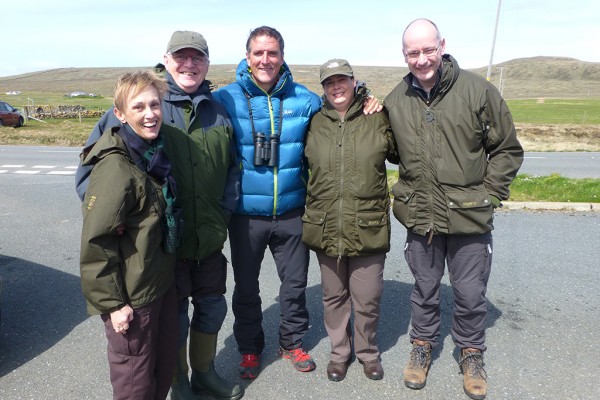
Hi Brydon, Thanks very much for such an enjoyable time on Unst. The wildlife and people are memorable and really made my time up there special. You know you’ve had a good day when icterine warbler, great reed warbler, red-backed shrike, otter and frog orchids are finished off with a pint of real ale from the Valhalla brewery! All the bestIolo Williamswww.iolowilliams.co.uk
BBC Springwatch presenter
It was a real pleasure to meet the crew and help out with some ground work, local knowledge and to have some of our purpose built hides used. It was especially good for our newest team member, Josh Jaggard (working with us this summer), who worked as an assistant to wildlife cameraman Raymond Besant for a few days on Unst while he worked on Bonxie’s, aka Great Skua.
We wanted to film the fantastic Bonxies on Unst, the third largest colony of the species in the world, whilst filming for Springwatch. They are brilliant to film, said to be the apex predator amongst the islands birds, displaying lots of different behaviour. But doing it well means getting close to them and shooting at a range of different locations.
We were able to get fantastic footage with the help of Brydon Thomason and Josh Jaggard from Shetland Nature who showed us their best locations. The purpose built hide where Bonxies gather at bathing club site was especially great. I was barely in the hide when they started landing in front of me, just 5 meters away! I’m used to working in small cramped cold hides, so to sit in a chair in a warm dry comfortable hide was a real pleasure. Even more so as a group of 50 Bonxies displayed, washed and fought with each other allowing me all the shots I needed.Raymond Besantwww.raymondbesant.com
Wildlife cameraman
BBC Springwatch presenter
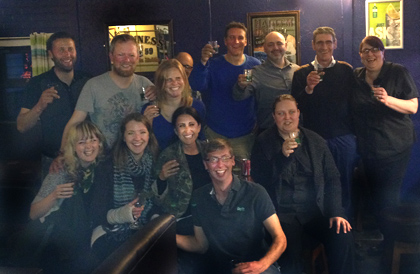
A great time had by all; a picture of the crew, myself and Josh as well as the staff at the Baltasound Hotel all together celebrating their time on the isles and the last night of them being together on Unst.
Permalink


